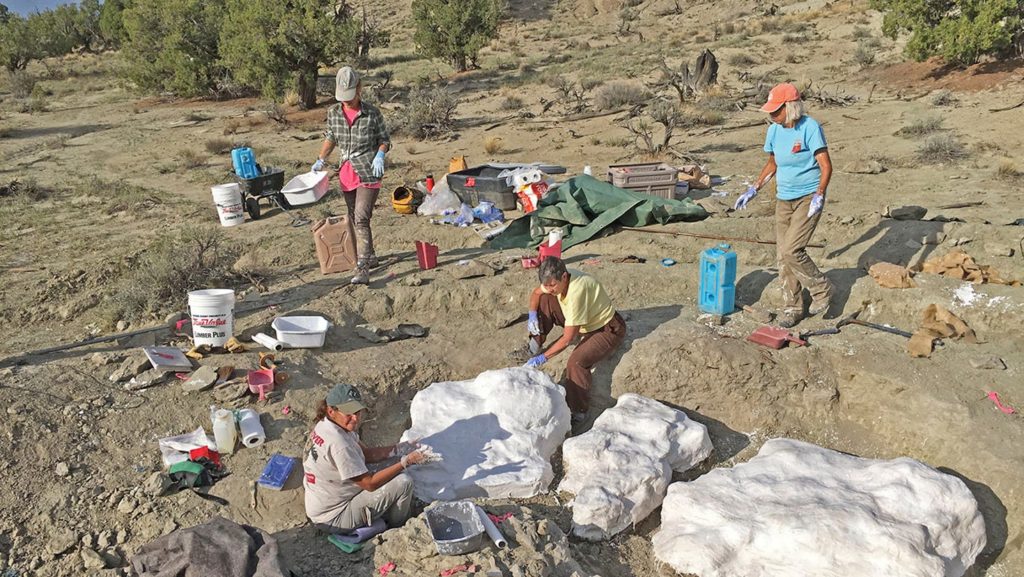New research revealed that tyrannosaurs may not be solitary predators as previously believed, but lived in packs like wolves. While studying a mass tyrannosaurs death site in the Grand Staircase-Escalante National Monument in southern Utah found seven years ago, the researchers developed this theory.
Researchers at the University of Arkansas used geochemical analysis of bones of rocks to determine that the dinosaurs died and got buried in the same place and ruled out the possibility of fossils washing in from various areas.
The site in Utah is the third mass tyrannosaurs death site to be discovered in North America. This strengthens the theory first developed 20 years ago that dinosaurs lived in packs.

Kristi Curry Rogers, a biology professor at Macalester College wasn’t involved in the study but reviewed it later. According to Rogers, more research is necessary to confirm this theory. She said, “It is a little tougher to be so sure that these data mean that these tyrannosaurs lived together in the good times. It’s possible that these animals may have lived in the same vicinity as one another without travelling together in a social group, and just came together around dwindling resources as times got tougher.”
Social Tyrannosaurs Theory
Bureau of Land Management paleontologist Alan Titus discovered the site in 2014. It was later named the Rainbow and Unicorns quarry due to the huge variety of fossils found inside. Excavation has been going on since then because of its huge size and volume of bones. Titus said, “I consider this a once-in-a-lifetime discovery for myself. I probably won’t find another site this exciting and scientifically significant during my career.”

The discovery of more than a dozen tyrannosaurs at a site in Alberta, Canada led to the formation of the social tyrannosaurs theory. The possibility of this theory further increased after another mass gravesite was discovered in Montana. Titus said that many scientists questioned the theory claiming the dinosaurs weren’t capable enough to engage in sophisticated social interaction since they didn’t have enough brainpower.
Joseph Sertich, curator of dinosaurs at the Denver Museum of Nature and Science said at a news conference, “Going that next step to understand behaviour and how animals behave requires really amazing evidence. I think that this site, the spectacular collection of tyrannosaurs but also the other assembled pieces of evidence, pushes us to the point where we can show some evidence for behaviour.”
The researchers also found seven species of turtles, two other kinds of dinosaurs, multiple fish and ray species, and a nearly complete skeleton of juvenile Deinosuchus alligator. The other animals do not seem to have died together.
Scientists have been pushing the government to restore the Bears Ears National Monument and Grand Staircase-Escalante to their original sizes in order to protect the rich paleontological and archaeological record of the region.
Further Reading:


